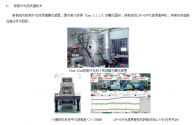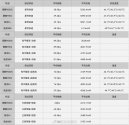I know TP Huang covered this story But bit and pieces are kind of hard to fit it together in one piece.Here is a summary of the status RF chips. I guess this is the last bottleneck for complete domestic cell phone supplier
China reportedly overcomes BAW filter chokepoint, sparking speculations of Huawei 5G phone's return
Staff reporter, DIGITIMES Asia, TaipeiFriday 11 August 2023
Credit: AFP
China's Saiwei Electronics has announced sucessful mass production and "domestic substitution" of Bulk Acoustic Wave (BAW) filters. While the industry remains conservative about the immediate integration of these filters into 5G smartphones, this breakthrough resolves China's long-standing "chokepoint" when it comes to RF (Radio Frequency) module supply, and further fuels speculation about the return of Huawei 5G smartphones.
Recently, reports have emerged about the potential revival of Huawei's 5G smartphones in the Chinese market. At a Huawei Developer Conference, Huawei's Executive Director and CEO of the Consumer Business Group, Yu Chengdong, stated that after four arduous years following the US ban, the HarmonyOS ecosystem has overcome numerous challenges, leading observers to believe that Huawei smartphones are on the way back.
Previously, Huawei's Kirin chips integrated 5G baseband technology but were hampered by issues with RF modules, thus hindering its 5G capabilities and relegating them to 4G functionality. In this case, BAW filter was the main obstacle for Huawei's 5G chip ambition.
In this context, Saiwei's latest announcement that its BAW filters have entered volume production has garnered considerable attention from the Chinese mobile phone and semiconductor industry.
According to Saiwei, it jointly procured equipment with the Wuhan-based MEMSonics Technology and built a production line for 8-inch BAW filters in Beijing, with mass production starting in July 2023. The partners aim to ramp up production capacity to meet market demands.
With an undisclosed customer, Saiwei Electronics entered a long-term procurement agreement. The initial phase of cooperation between the two parties involves 12 different models of BAW filters and their derivative components. The agreement is set to be executed from August 2023 to December 2024, with a contract amount of no less than CNY100 million.
Despite Saiwei's reluctance to disclose specific customer information, the BAW filters produced under this long-term agreement will be used in products determined by the customer. However, speculation is rife that the customer is likely Huawei.
It's understood that the Phase 1 monthly production capacity of Saiwei Electronics' Beijing FAB3 facility is 10,000 units. Simultaneously, Phase 2 construction is underway, with a projected monthly capacity of 20,000 units. The cleanroom facilities for Phase 2 will result in a combined monthly production capacity of 30,000 units. This includes the dedicated BAW filter production line established in collaboration with MEMSonics.
Industry analysis indicates that in the past, China heavily relied on external suppliers for RF chips, but due to the US ban, these suppliers couldn't provide 5G RF modules to Huawei. While some companies have achieved autonomous production and domestic substitution of BAW filters, it might not immediately translate to their integration into Huawei's 5G smartphones, as filter technology requires significant expertise in both design and manufacturing processes.
For instance, the mainstream technology in BAW filters - the Film Bulk Acoustic Resonator (FBAR) - demands highly precise etching and places stringent requirements on chip manufacturing processes. Furthermore, engineers must possess comprehensive knowledge of semiconductor physics and manufacturing processes to design high-performance filters.
Apart from technological barriers, there is also an issue of market dominance. The filter sector is highly technology-intensive and primarily controlled by major players in the US and Japan, including Murata, TDK, Taiyo Yuden, and Skyworks. Collectively, these four companies hold a market share of 95%.
In the specific segment of filter components, Broadcom is the predominant player, commanding an 87% market share, while Qorvo holds 8%, resulting in a combined market share of over 95% for these two companies.
Given that China's semiconductor capabilities are still relatively behind, there has yet to emerge a domestic enterprise capable of large-scale production and supply. The few players engaged in this field, aside from Saiwei Microelectronics, include companies like Shenzhen Microgate Technology, Cixing, ROFS Microsystem, and EPIC MEMS



